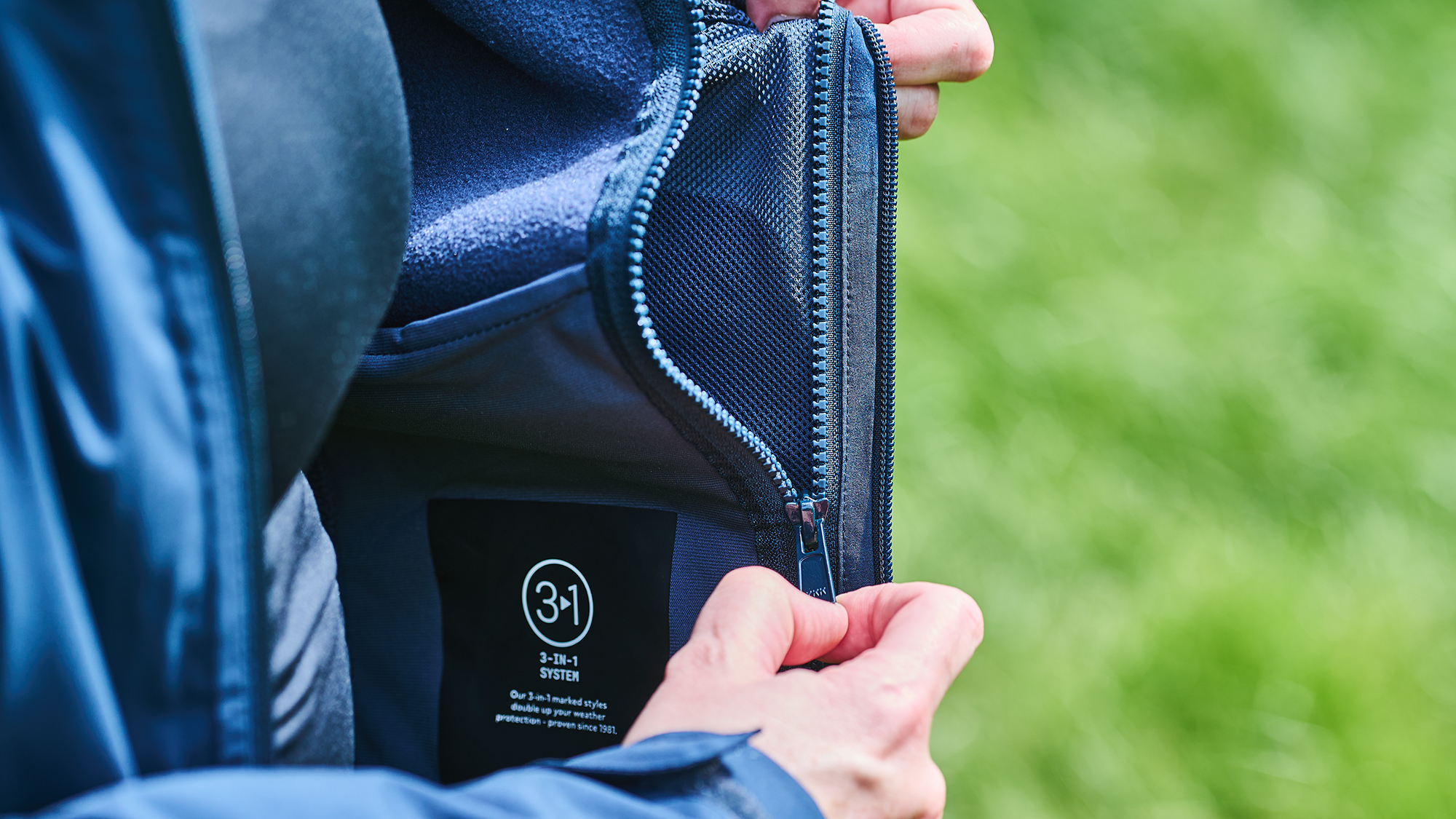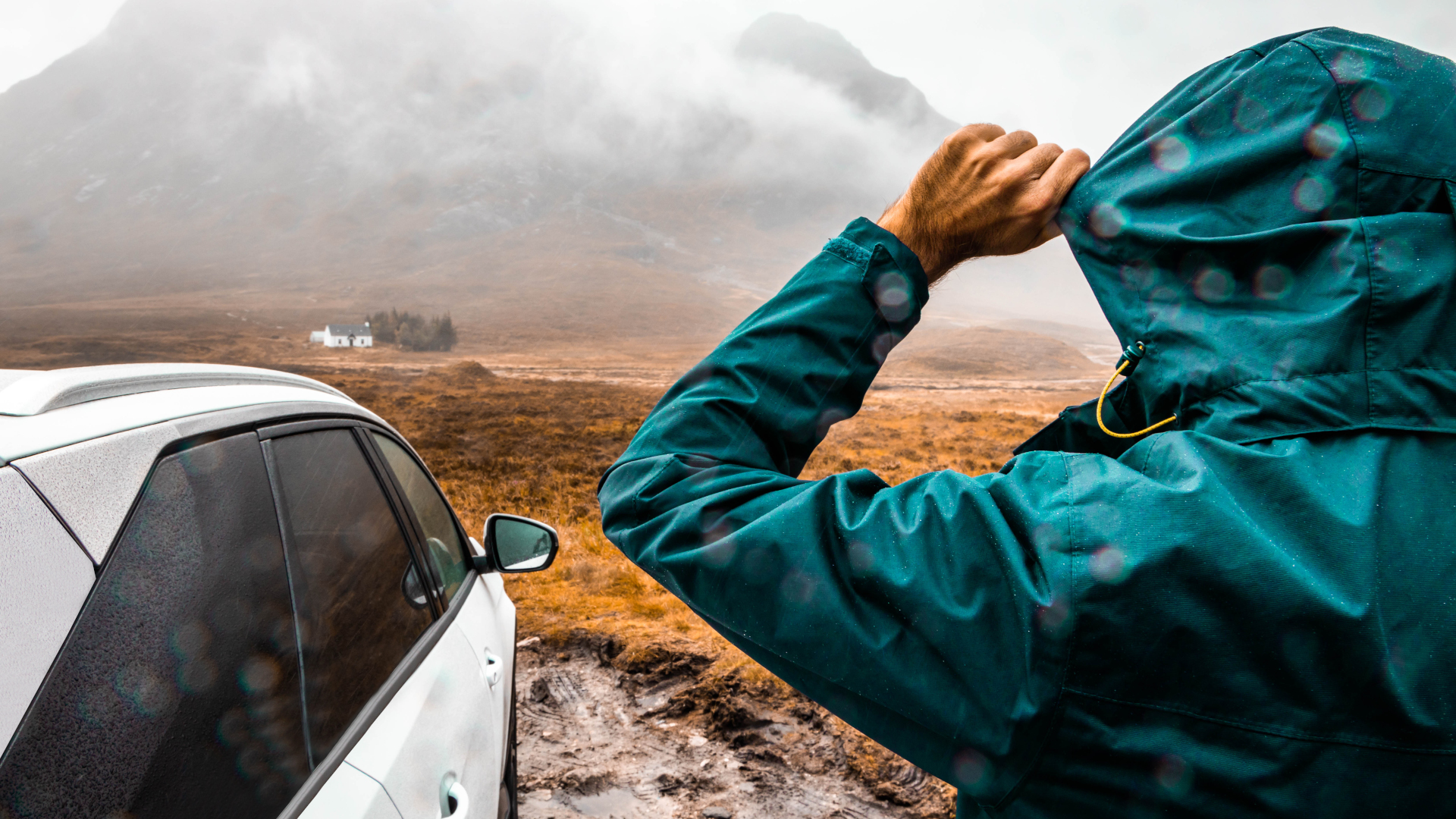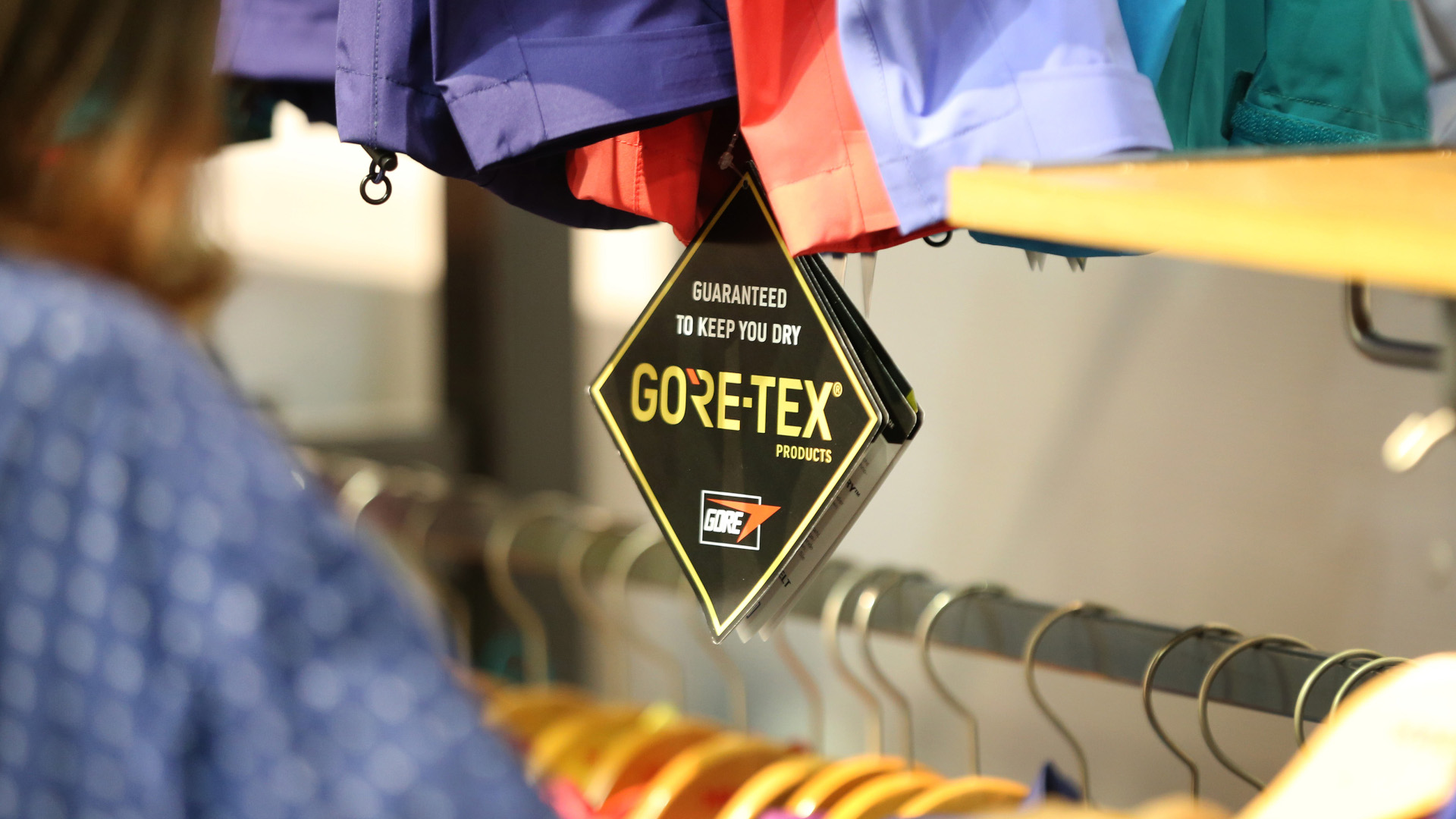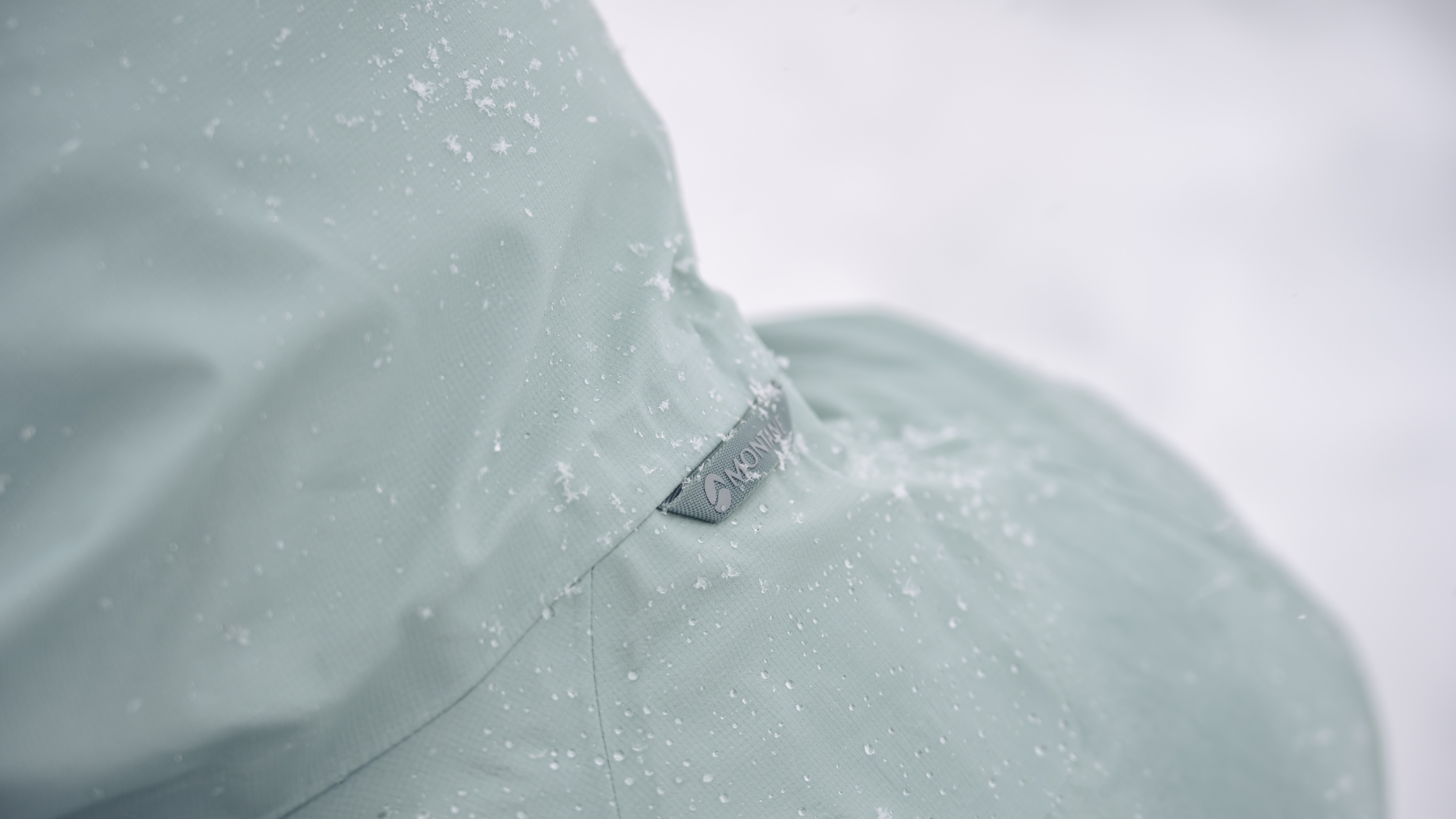How to decode the label on your waterproof jacket
Trying to decipher terms like membrane, DWR and hook-and-loop fasteners can leave your head spinning

There’s no two ways about it: if you’re adventuring anywhere but the most arid climates, you need a waterproof jacket. Waterproof jackets are an essential year-round piece of kit that protect you against the worst of the elements and a good one can easily be rolled up and packed away in your backpack when the weather is on your side.
As waterproof jackets have become more technical, they’ve grown more expensive and when you’re buying a new one, you want to make sure you buy right the first time. It needs to be robust enough to hold off whatever nature hurls your way, but the most technical hardshells can be far too much for more casual adventures and milder climates.
Trying to decipher terms like membrane, DWR and hook-and-loop fasteners can leave your head spinning, never mind the choice between 2-layer and 3-layer jackets, so we take all the work out of things and help you decode the label on your waterproof jacket. Read on to understand know exactly what you’re getting for your money, and make sure it’s the best choice for your upcoming adventures.

Face fabric
The face fabric is the fabric on the outside of your jacket. It’s typically made from either nylon or polyester and it can be made thicker or thinner depending on the jacket. A thicker face fabric with a higher denier (50 - 75) is usually more durable and will be found in hardshell jackets like The North Face Stolemberg 3L Dryvent while a thinner face fabric with a lower denier of 20 - 30 is best for lighter and more flexible jackets such as the Kathmandu Trailhead Stretch.
Membrane
In a technical waterproof jacket built for hiking, the membrane is the part that keeps you dry. This is a very thin, flexible piece of fabric made from plastic which keeps water out but also cleverly lets water vapor (AKA sweat) escape. Typically, this is bonded to the inside of the face fabric, so you can’t see it very well, but in Columbia’s OutDry Extreme line, it’s worn on the outside, which arguably works even better.
The most ubiquitous membrane used by outdoor brands is Gore-Tex, but there are many other Gore-Tex alternatives and some outdoor brands such as Montane are devising their own, more environmentally friendly membranes. Responding to environmental concerns, Gore-Tex has also switched to a PFAS-free approach to make waterproof membranes and in general, it’s a good idea to look for that term on the label.

2-layer, 3-layer
Technical waterproof jackets built for adventure are made by bonding together to two layers described above, while some have an additional third layer. A 2-layer jacket has an outer face fabric bonded to a breathable waterproof membrane with no lining, so the membrane is the layer closest to your body.
All the latest inspiration, tips and guides to help you plan your next Advnture!
A 3-layer jacket also has an inner lining that protects the membrane and helps make your jacket less noisy when you’re walking. As you might guess, 2-layer jackets are a bit lighter and more breathable but can be less durable than their 3-layer counterparts, which are better built for harsher conditions and a bit tougher. You can learn more about this distinction in our article on the differences between two-layer and three-layer jackets.
DWR
In addition to a waterproof membrane, the face fabric of your jacket will be treated with DWR, which stands for Durable Water Repellency. DWR coatings are chemical treatments applied to the face fabric of your jacket to make it hydrophobic – it’s what causes the rainwater to bead on your jacket and it’s often described as your first line of defense in wet weather.
There are two things to know about DWR as a consumer. First, these have historically been made using harmful chemicals, but brands are now embracing more environmentally friendly versions, so when you’re buying a new jacket, look for one with PFC-free DWR on the label.
Second, DWR wears off through wear and washing and needs to be reactivated. You can do this with gentle, dry heat, such as with a tumble dryer or placing a towel over your jacket and using an iron. If this doesn’t work, you may need to reapply the DWR. Learn more in our article on how to wash a Gore-Tex jacket.

Pit zips
A universal feature of waterproof jacket is that, no matter how breathable the membrane is, they’re by nature not the most breathable item in your wardrobe. In fact, they’re the least breathable. If you’re planning on working up a sweat in your waterproof jacket – say, you’re hiking up a steep mountain – you’re going to want to look for one with ventilation, and that basically means pit zips.
Pit zips are zips under the armpits that you can unzip on a hike to dump heat from a warm, sweaty area of your body without the rain getting in.
Two-way zipper
Two-way zippers are exactly what they sound like – zippers that you can unzip from the bottom as well as the top. These aren’t that important on mid layers like your fleece jacket, but they add a lot of value to a waterproof jacket, because it means you can access things in the pockets of your mid layer without unzipping your entire jacket in torrential rain.
Zipper garages
A waterproof zipper will provide a lot of protection, but there’s still a crack where rain can leak through and that’s at the very top of the zipper, especially if it’s not completely closed. Enter the zipper garage, which is a tiny pocket where you can stash the pull tab when your zipper is zipped all the way so no moisture can leak through.

Storm flap
A storm flap is a pretty standard detail on most jackets, but it’s still helpful to know why it’s there. This is the piece of waterproof fabric that either sits behind or overlays your front zipper. This forms a secondary protective barrier so that if any moisture does breach your zipper, it won’t reach your mid layer. It’s helpful if it’s at least one inch wide.
Chinguard
A chinguard is waterproof jacket speak for the collar, really, and it’s the part of the jacket that protects the lower part of your face when you zip it all the way up. This can help protect sensitive skin from wind and icy rain when you don’t have a neck gaiter and also keeps rain from going down the front of your jacket. Because this part touches your face, it’s nice when it’s lined with a little microfleece to avoid chafing.
Helmet compatible hood
Helmet compatible hoods are becoming more common on waterproof jackets like the Helly Hansen Odin 1 World Infinity Shell so that they can be worn for skiing and snowboarding. Thse are obviously bigger than regular hoods to fit over your helmet, but they can be tightened. However, if you only want a jacket for dryland activities this isn’t something you need to look for, and a regular hood will privde a more snug fit which is helpful on a windy day.

Hook-and-loop fasteners
Hook-and-loop is the generic name for the technology we usually refer to as “velcro,” however Velcro is actually a brand name so can’t be used ubiquitously. Anyway, this means that part of your jacket – usually the cuffs – can be cinched together by two pieces of material that stick together. These help to keep out the wet by making your cuffs tighter, and are easy to adjust when you’re wearing bulky hiking gloves.
Julia Clarke is a staff writer for Advnture.com and the author of the book Restorative Yoga for Beginners. She loves to explore mountains on foot, bike, skis and belay and then recover on the the yoga mat. Julia graduated with a degree in journalism in 2004 and spent eight years working as a radio presenter in Kansas City, Vermont, Boston and New York City before discovering the joys of the Rocky Mountains. She then detoured west to Colorado and enjoyed 11 years teaching yoga in Vail before returning to her hometown of Glasgow, Scotland in 2020 to focus on family and writing.

